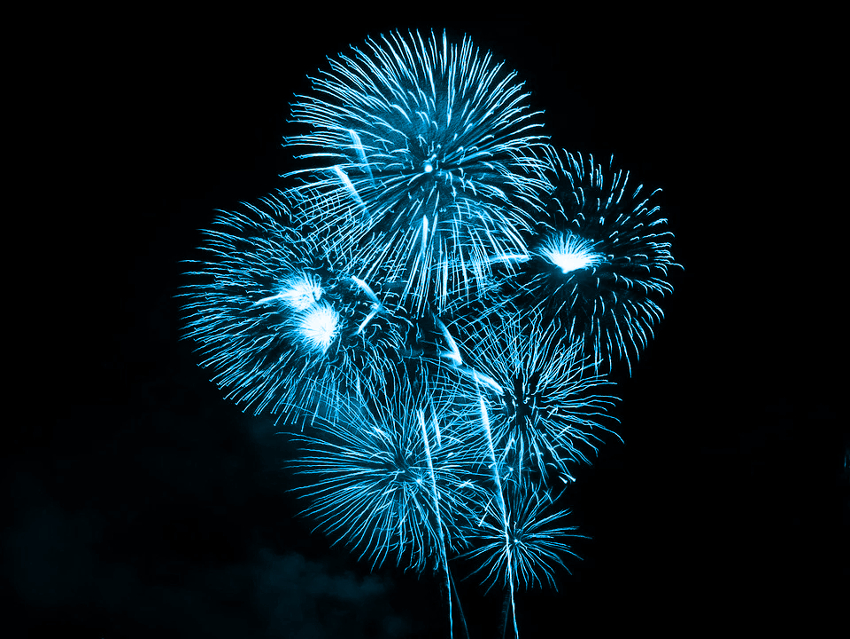Blue is considered the most challenging color to create in fireworks. Usually, copper salts are combined with chlorine sources to form copper(I) chloride, which emits blue light. However, this approach can also lead to the formation of highly carcinogenic polychlorinated compounds. In addition, if the temperature exceeds a certain level, copper(II) oxide and copper(I) hydroxide are formed. These compounds emit red and green light, respectively, and therefore, reduce the overall color quality. Thus, avoiding chlorine in blue fireworks would be advantageous.
Thomas M. Klapötke and colleagues, Ludwig-Maximilian University, Munich, Germany, have developed strategies to fine‐tune the performance of chlorine-free blue‐light‐emitting pyrotechnical formulations. Chlorine‐free pyrotechnical mixtures can, for example, use copper(I) iodide or copper(I) bromide as blue light emitters. The formulations for these approaches usually contain copper iodate or bromate as oxidants.
The team did not find an improved pyrotechnical formulation using copper iodate. For copper bromate-based mixtures, in contrast, they found that adding nitrogen-rich compounds such as 1,2,4‐triazole, 5‐amino‐1H‐tetrazole or 3‐nitro‐1H‐1,2,4‐triazole improves the spectral purity. Overall, the work showed that it is possible to reach the optical performance of a perchlorate‐based blue reference formulation using fine‐tuned bromate‐based mixtures. However, this also increased the sensitivities to friction and impact and thus, the safety risks of the formulations.
- Fine-Tuning: Advances in Chlorine-Free Blue-Light-Generating Pyrotechnics,
Johann Glück, Thomas M. Klapötke, Teresa Küblböck,
Eur. J. Inorg. Chem. 2020.
https://doi.org/10.1002/ejic.201901097




